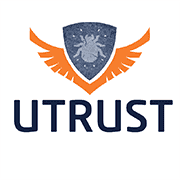Improving the process quality is an essential aspect of any organization that strives to achieve success, efficiency, and sustainability. It refers to the degree to which a process meets the requirements of the customer, the organization, and the stakeholders. A high process quality ensures that a company can consistently deliver products or services that meet or exceed customer expectations. In this article, we will discuss 50 ways to improve the process quality.
- Establish clear and measurable objectives for your processes.
- Develop a process map to understand the flow of activities and identify potential bottlenecks.
- Use statistical process control to measure and monitor process performance.
- Collect data to identify trends and patterns and use it to improve your processes.
- Identify and eliminate unnecessary steps in your processes.
- Use process automation to reduce the risk of human error and improve efficiency.
- Implement process standardization to ensure consistency and predictability.
- Develop a process improvement team to identify and address process issues.
- Use process simulations to test and optimize your processes.
- Implement process monitoring tools to track progress and identify opportunities for improvement.
- Implement process documentation to ensure consistency and standardization.
- Use process mapping tools to visualize your processes and identify opportunities for improvement.
- Use process mapping to identify and eliminate non-value-added steps.
- Implement process audits to ensure compliance with standards and regulations.
- Use process metrics to measure, monitor, and improve process performance.
- Implement process feedback mechanisms to gather input from stakeholders.
- Implement process improvement training to ensure that your team has the skills and knowledge to improve your processes.
- Use process mapping to identify and eliminate process waste.
- Implement process optimization tools to improve efficiency and reduce waste.
- Use process mapping to identify and eliminate process delays.
- Implement process improvement software to automate and streamline your processes.
- Use process mapping to identify and eliminate process redundancies.
- Implement process improvement methodologies such as Six Sigma or Lean to optimize your processes.
- Use process mapping to identify and eliminate process bottlenecks.
- Implement process improvement workshops to generate ideas for process improvement.
- Use process mapping to identify and eliminate process errors.
- Implement process improvement coaching to build process improvement skills and knowledge.
- Use process mapping to identify and eliminate process inconsistencies.
- Implement process improvement metrics to measure and track the impact of your process improvements.
- Use process mapping to identify and eliminate process ambiguities.
- Implement process improvement incentives to motivate your team to improve processes.
- Use process mapping to identify and eliminate process redundancies.
- Implement process improvement communication to ensure that your team is aware of process improvements.
- Use process mapping to identify and eliminate process inefficiencies.
- Implement process improvement culture to create a mindset of continuous improvement.
- Use process mapping to identify and eliminate process redundancies.
- Implement process improvement best practices to optimize your processes.
- Use process mapping to identify and eliminate process complexities.
- Implement process improvement collaboration tools to improve teamwork and communication.
- Use process mapping to identify and eliminate process redundancies.
- Implement process improvement leadership to ensure that your team is committed to process improvement.
- Use process mapping to identify and eliminate process redundancies.
- Implement process improvement alignment to ensure that your processes are aligned with your organizational goals.
- Use process mapping to identify and eliminate process redundancies.
- Implement process improvement governance to ensure that your processes are managed effectively.
- Use process mapping to identify and eliminate process redundancies.
- Implement process improvement risk management to identify and mitigate process risks.
- Use process mapping to identify and eliminate process redundancies.
- Implement process improvement change management to manage process changes effectively.
- Use process mapping to identify and eliminate process redundancies.
In conclusion, improving process quality requires a systematic approach that involves analyzing, optimizing, and monitoring processes to ensure that they are efficient, effective, and aligned with organizational goals. By implementing some or all of these 50 ways, organizations can achieve process excellence and improve their competitive advantage.
Comments are closed.





